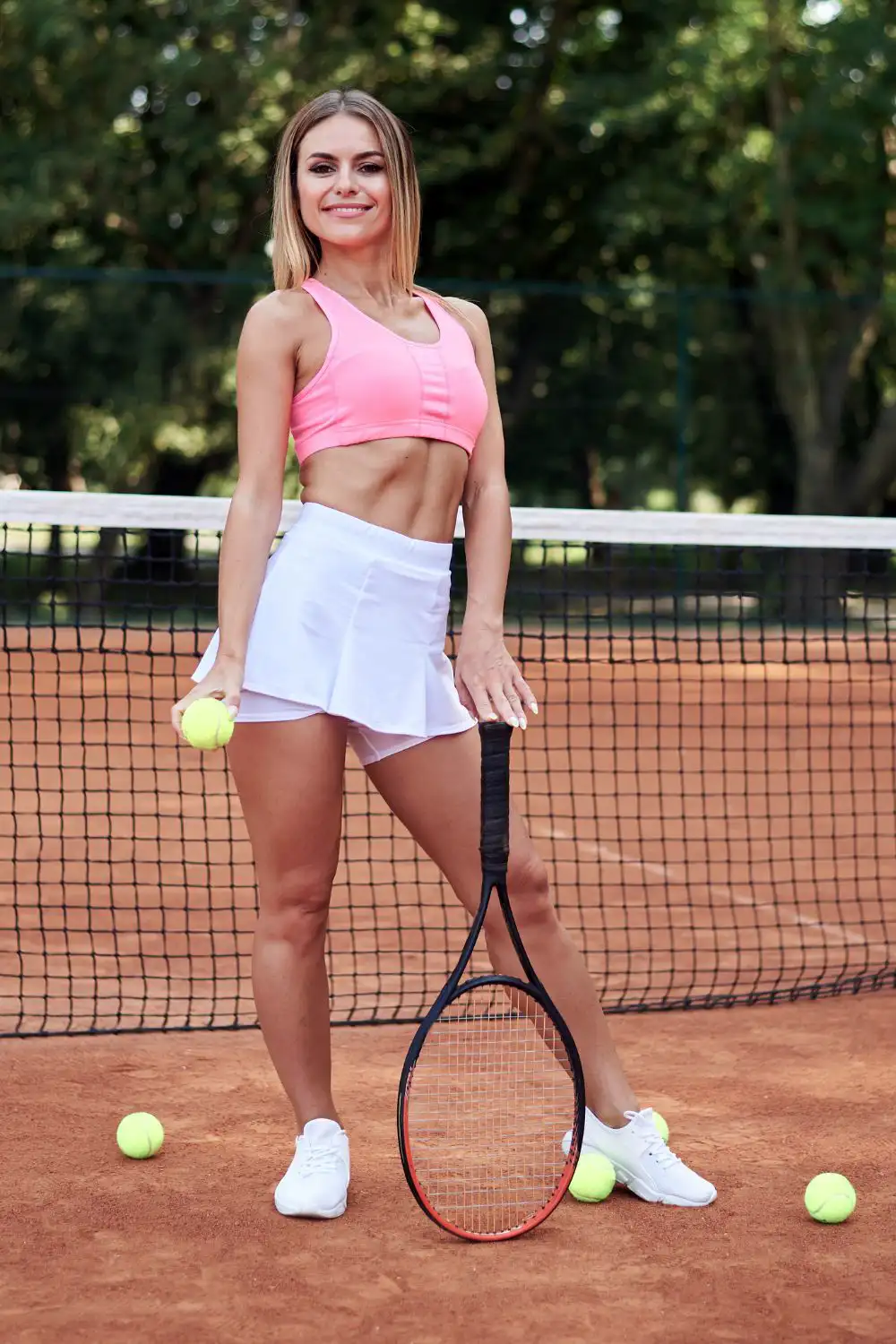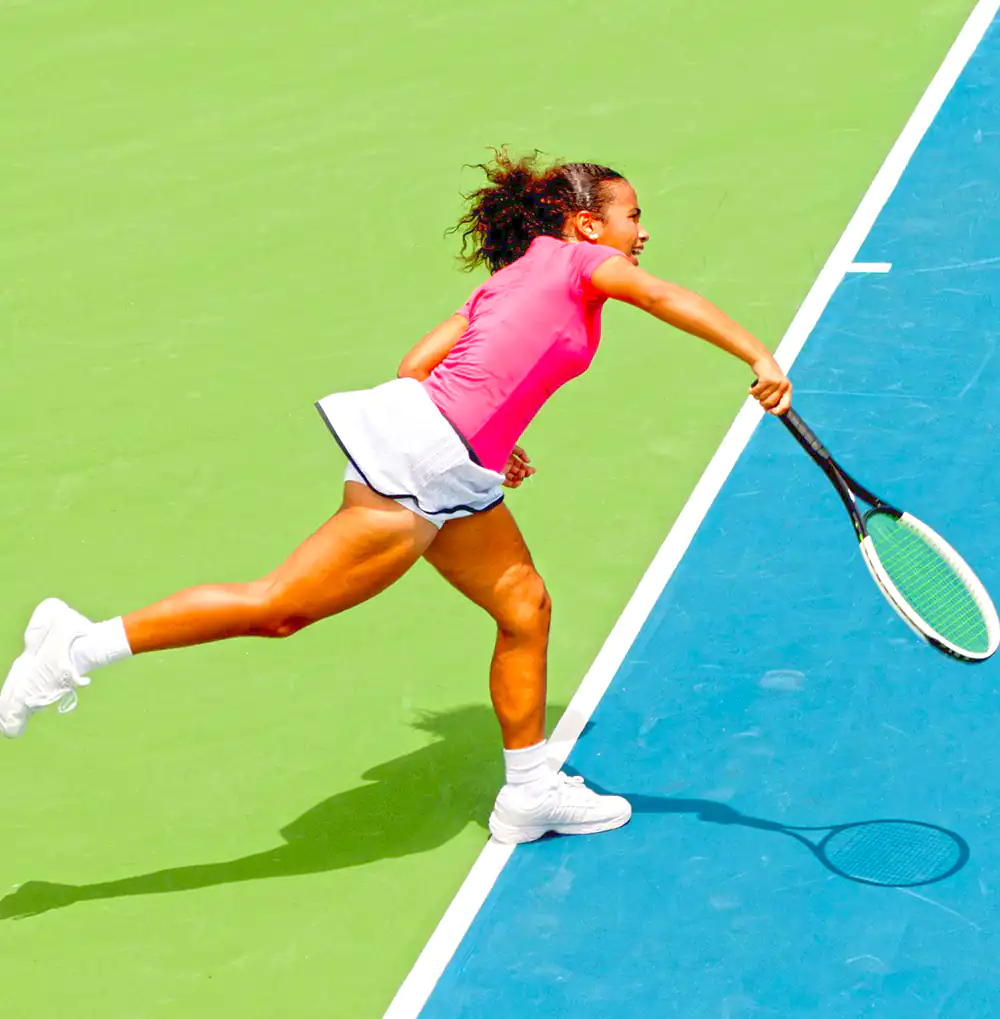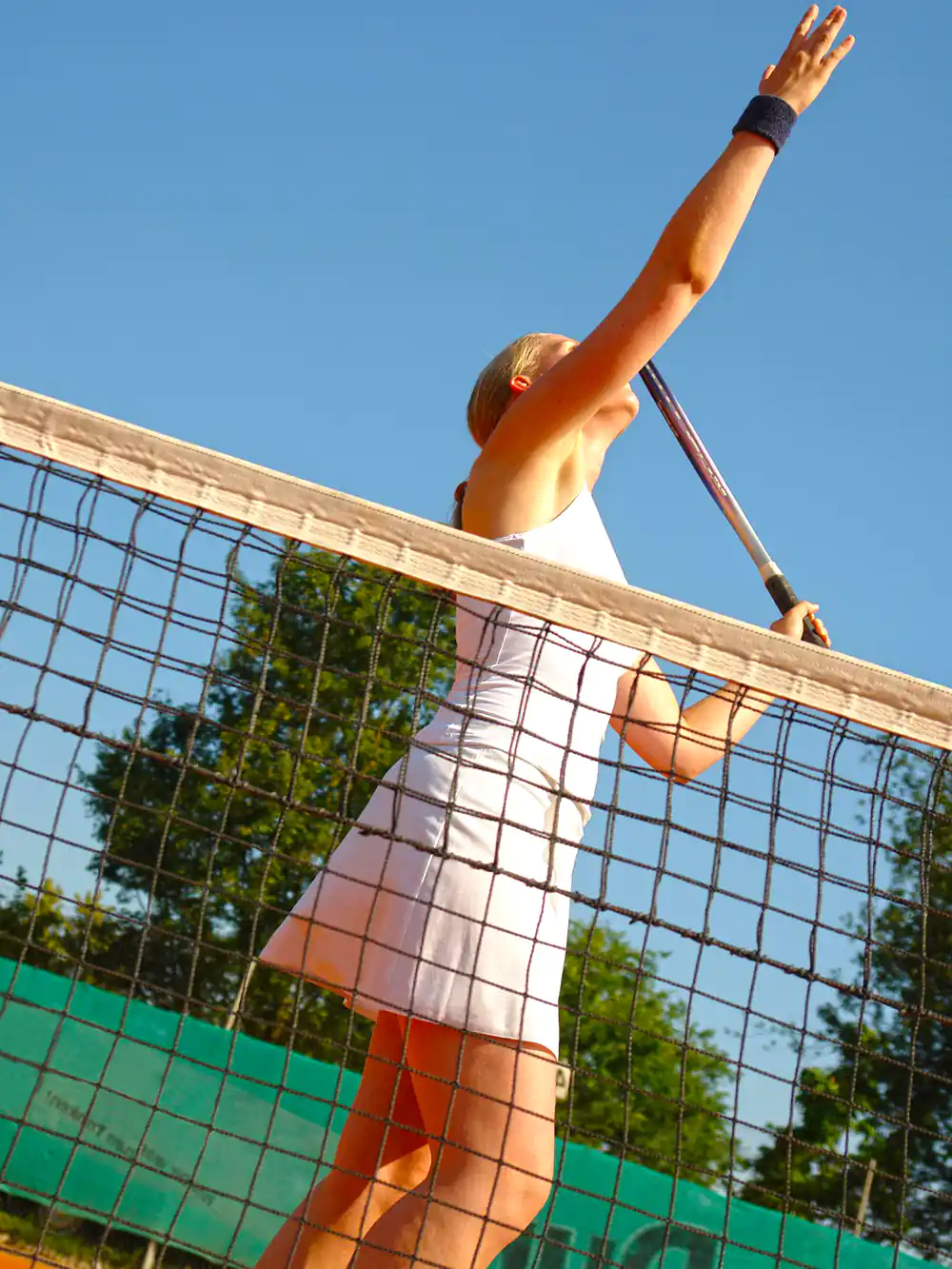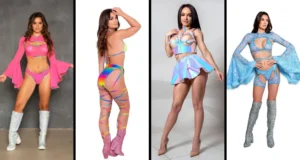Tennis skirts have long been an iconic part of women’s tennis attire. Female players have worn skirts for decades to uphold tradition, appeal to audiences, and reinforce proper femininity. Today, however, skirts remain, most of all, a matter of personal expression and comfort.
Though skirts originated to distinguish women’s tennis as a respectable sport for ladies, they have evolved immensely and vary widely. Comfort has trumped convention as skirts have become shorter, more innovative, and adapted to every active lifestyle. Style, too, holds sway as players craft looks that make them feel powerful yet poised.
There is no single reason female tennis players continue wearing skirts, though history, fashion, and personal values all play a role. Some see skirts as integral to preserving a sport’s legacy and heritage, while others find little reason to wear them beyond personal preference. Empowerment comes before expectation, as players define propriety and femininity for themselves, on and off the court.
Why do female tennis players wear skirts?
Here are some simple reasons why female tennis players typically wear skirts:
Tradition
Female tennis players have traditionally worn skirts on the court for decades. Skirts have become synonymous with women’s tennis culture and fashion.
Many players feel that wearing a skirt helps uphold the tradition of the sport and shows pride in being a women’s tennis player. Skirts offer myriad style options for players to express their individuality and flair within the traditional uniform.
Players can choose from different skirt lengths, colors, materials, and patterns that suit their personal preferences and style while still complying with the basic skirt requirement. Contemporary skirts now come in athletic cuts that allow players freedom of movement while maintaining a feminine silhouette.
Serena Williams, one of the best players today, is known for experimenting with different skirt looks that match her energetic and fashion-forward personality.
In short, skirts allow female tennis players to pay homage to the sport’s history while infusing it with modern flare and individuality.

Style
Female tennis players wear skirts because they provide a fashionable and stylish option for the court. Many players like how skirts dress up their tennis uniforms and feel they express their feminine side in a sporty way.
Skirts allow players to show off their own personal sense of fashion and flair within the traditional tennis uniform. With options in various lengths, colors, patterns, and materials, skirts match players’ preferences while still conforming to the basic tennis uniform requirements.
Players today experiment more with modern skirt cuts and designs to stay on trend without compromising comfort or performance. In conclusion, skirts permit female tennis players to bring some style and panache to their tennis outfits while complying with the sport’s traditional standard uniform for women.
Sex appeal
Female tennis players do not wear skirts to enhance their sex appeal on the court. The main reasons for wearing skirts are comfort, performance, and tradition rather than attracting attention.
Skirts are usually worn because players feel most confident and can play their best tennis. Many female players prefer skirts for practical reasons like increased freedom of movement and breathability.
Skirts adhere to the traditional tennis uniform for women that has been around for decades. They become a part of the sport’s culture. While some skirts can be stylish and colorful, the primary purpose is to comply with the tennis dress code.
In summary, female tennis players wear skirts for comfort, performance, and tradition more so than to enhance their sex appeal.
Comfort
Female tennis players wear skirts because they provide more comfort compared to shorts. Skirts allow for greater freedom of movement, which is crucial in a sport requiring a lot of running and swift direction changes.
Most modern tennis skirts feature built-in shorts that give players unrestricted mobility, enabling them to reach balls quicker. Skirts are also more aerodynamic, helping players move faster on the court. The breathable fabrics used in tennis skirts keep players cooler and drier on hot days.
Tennis skirts have evolved over the years to be lighter, stretchier, and woven with moisture-wicking fabrics to manage sweat. They have become iconic in women’s tennis fashion, offering comfort and performance benefits.
In short, comfort tops the list of reasons why female tennis players prefer skirts over shorts when competing.
Distinction
While skirts help distinguish female tennis players from male players, this is not the primary reason why women wear them. Skirts offer comfort, performance, and traditional benefits over shorts.
Modern tennis skirts have built-in shorts providing total freedom of movement, allowing quick court coverage. They are also aerodynamic, aiding in faster movement.
The wide range of skirt options in different lengths, colors, and patterns allows players to choose based on feel and style. Skirts have been part of the traditional tennis uniform for women for decades and are seen as upholding an important aspect of the sport’s culture.
Though the distinctive look of skirts helps identify female players, comfort, performance, and tradition remain the most compelling reasons for their continued use among women tennis athletes.
Modesty
While some female tennis players may prefer wearing skirts for modesty reasons, this is not the primary factor influencing their choice. Many players choose skirts for performance benefits like increased mobility and aerodynamics.
Modern tennis skirts feature built-in shorts providing total freedom of movement and the ability to cover ground quicker. The variety of skirt lengths, fabrics, and styles allows players to pick options based on comfort, function, and personal style rather than just coverage.
Skirts have been part of traditional women’s tennis attire for decades and are viewed as upholding an important aspect of the sport’s culture. Female players appreciate how skirts can look stylish and feminine while adhering to the sport’s dress code.
Therefore, while some players may value skirts’ extra coverage, comfort, performance, and tradition remain the bigger drivers for why most women wear skirts on the tennis court.
Empowerment
Wearing skirts can give female tennis players a sense of empowerment and confidence on the court. Skirts offer the freedom of movement to cross the tennis court quickly and agilely, giving players a feeling of strength and athleticism.
The comfort and flexibility of skirts allow players to focus on their game and feel in control of their performance, enhancing self-assurance. Tennis skirts also allow for personal expression through unique styles reflecting a player’s personality and individuality, boosting confidence.
The distinctive look of skirts helps players stand out from male athletes on the tennis court, giving them a sense of presence and prominence. While comfort, performance, and tradition remain the main reasons for wearing skirts, the empowerment and self-assurance they provide should not be discounted, as this mindset positively impacts players’ performance.
Personal expression
While comfort, performance, and tradition remain the main reasons female tennis players wear skirts, self-expression through style is another key factor.
Tennis skirts allow players to reflect their individual personalities and exhibit their unique flair. The variety of currently available skirt designs – in different lengths, fabrics, colors, and patterns – allows players to showcase their flair and style freely.
For instance, world number one Serena Williams is known for experimenting with different bold and colorful tennis skirt designs that match her energetic and fashion-forward personality.
For many female players, choosing and wearing distinctive tennis skirts doubles as a means of self-expression. They appreciate how skirts can look stylish and feminine while adhering to the sport’s basic dress code requirements.
In conclusion, personal expression through style is an added incentive for why skirts remain a popular choice among women tennis players.
Sponsorship
While female tennis players wear skirts for reasons like comfort, performance, and tradition, sponsorship requirements also influence their choice of attire. Tennis organizations and brands sponsoring players may mandate that they wear specific clothing as part of endorsement deals.
In some cases, sponsors prefer that women players wear skirts because they perceive it will help garner more attention for their brand and products.
Therefore, together with factors like comfort, movement freedom, and adherence to tennis tradition, female players also have to consider sponsorship contracts that sometimes necessitate wearing skirts over shorts.
For instance, top players like Serena Williams have apparel deals with brands for whom the tennis skirt is integral to their marketing and branding strategies.
In summary, sponsorship arrangements and obligations can present another, albeit less dominant, reason why female tennis players wear skirts on the court.

How long are tennis skirts supposed to be?
Tennis skirts typically range in length from 11 to 15 inches (28-38 cm) from the waistband to the bottom hem.
A length of around 13 inches (33 cm) is often recommended as a good default or moderately short option that provides freedom of movement while still being somewhat modest.
Players should ultimately choose the most comfortable length, balancing modesty, movement, and personal style.
Some skirts come with built-in shorts or panties for added coverage and to prevent accidental exposure, which can be a good option for some.
The length is measured from the waistband’s top down to the skirt’s bottom on the center backside.
These guidelines help provide practical recommendations while still allowing for preference and variation. Not all players will choose exactly 13 inches, but that serves as a general reference point.
Historical or cultural conventions also come into play for some, impacting what is viewed as appropriate length. But comfort and personal expression are prioritized by many players today.
Fashion norms and commercial interests have led skirt lengths to trend shorter over time, but there are limits before length becomes impractical or inappropriate for tennis.
Dress code policies at tournaments may set basic parameters, but enforcement of strict skirt length rules is limited, allowing for a range in practice.
What do female tennis players wear under their skirts?
Tennis skirts are specially designed for the sport and commonly have built-in compression shorts that provide a full range of movement without exposure. These provide comfort and a modest appearance.
Undergarment options for female tennis players
Compression shorts under skirts technically serve as trunks to prevent exposure during play. But they allow complete freedom of movement.
Players can wear whatever undershorts/undergarments make them comfortable under their skirts, including spandex shorts with pockets for carrying balls. These offer comfort, efficiency, and coverage.
Some skirts/shorts have built-in tights/leggings for extra coverage, comfort, and trapping balls. These keep players confident during play.
All apparel, including undershorts, must be primarily white at major events like Wimbledon. Leggings are allowed in cold weather.
Players historically held two balls in their hands while serving, but now most do not. Ball shorts provide coverage and pockets for carrying balls.
Undershot designs have improved to be low-profile under skirts while offering coverage, comfort, and breathability. Seamless, lace, and mesh fabrics help prevent visible panty lines.
Cultural or social pressures still impact what is viewed as appropriately modest attire, influencing skirt lengths and coverage. But player comfort and expression also play a strong role today.
Cultural and commercial influences on tennis attire for women
Commercial interests in sex appeal have led to shorter skirt lengths for some players or tournaments, but there are limits before impracticality or unsuitability.
Dress code policies provide some guidelines but enforcement of strict rules around skirt length and undershorts is typically limited, allowing for range in practice. Player preference dominates.
Why do tennis skirts have upside down pockets?
Tennis skirts incorporate upside-down pockets designed to securely hold tennis balls without falling out during play. These pockets make it easy to store balls on the body. Other options for holding balls include pockets sewn into skirts, ball holders, spandex, and deep pockets in tennis shorts. Players can choose whichever methods they prefer and find most convenient/usable.
The upside-down pocket design in tennis skirts
While upside-down pockets are common, not all tennis skirts feature them. Some skirts have pockets on both sides that are not inverted. Pocket styles vary, and options suit different player preferences.
Some players find upside-down pockets useless, too tight to use quickly with one hand, or otherwise inconvenient. They see them as impractical or unnecessary, even if they remain a popular design feature. Player opinion impacts brands and innovations.
Players’ preferences for ball storage in tennis skirts
Multiple methods of ball storage under tennis skirts have developed to suit different playing styles, ball preferences, and views on pocket utility. So, there is no single right answer, and many options coexist.
While pockets serve various purposes, such as convenience, comfort, and efficiency, some players view upside-down pockets as more of a hindrance than a help. They find these pockets’ tight and awkward design to be unnecessary and impractical. Practicality reigns supreme for players.
Cultural norms of modesty can affect the design and visibility of pockets, which can impact how many balls may be seen based on pocket depth. Some value discretion and decorum.
Dress code policies may set basic rules around pocket/ball storage features, but playability and personal comfort ultimately dominate for players. Strict enforcement of standards around pockets is rare.

Are tennis skirts just for tennis?
Tennis skirts have become popular for those not playing tennis, worn for workouts, exercise classes (Pilates, yoga, cardio), and general fashion style. They offer a sporty yet fashionable look that many find appealing and versatile.
Features that benefit tennis, such as breathability, movement, stretch, and compression, make skirts useful and suitable for other activities and lifestyles. They are designed for physical exertion and comfort on the move.
Tennis skirts as versatile athletic wear
Styles like pleated skirts and elastic waistbands further enhance movement, flexibility, and range of motion. Skirts accommodate an active lifestyle beyond just tennis.
While originally created for tennis, skirts have clearly transcended the sport and now represent ideals of sportiness, fitness, and versatility in fashion/culture more broadly. They have found new relevance and purpose outside tennis.
There is no requirement or rule compelling players to wear skirts. Comfort and personal preference primarily motivate clothing choices, not obligations. Players can wear “appropriate tennis attire” without necessarily including a skirt.
Personal preference vs. obligation in tennis attire
Skirts must adhere to standards of comfort, flexibility, and decency for the activity and personal style, not strict tennis tradition or dress code. Practical considerations overrule cultural conventions or expectations.
A sporty-meets-feminine aesthetic continues to inspire skirts, but they are seen as versatile performance pieces, not just decorative tennis uniforms. They suit an energetic female identity beyond just tennis players.
Tennis skirts in the fashion and fitness industry
Partnerships with activewear brands, sponsorships, and general fashion/fitness industry influence have elevated the profile of tennis skirts outside courts. They transcend their origins and are recognized as sports-chic style staples.
In summary, while created for tennis, tennis skirts have undoubtedly resonated beyond the sport, becoming popular for workouts, exercise, fashion, and an active lifestyle Features that benefit tennis also allow them to suit various athletic and physically active days, and they represent an aesthetic that many women find versatile and appealing across contexts. Tennis skirts are no longer just for tennis players but active, stylish women everywhere.
What is the history of tennis skirts?
Tennis skirts originated in the late 19th century, around the same time as the modern rules of tennis were established. They were designed to meet the new standards of femininity, modesty, and propriety emerging for women at the time. Skirts were seen as an appropriately modest option for athletic activity and competition.
Skirt length gradually shortened over the early-mid 20th century, influenced by evolving fashion norms, commercial interests in sex appeal, and women gaining more freedom and independence. But skirts still reached at or below the knee for most of this time period due to cultural expectations of decency.
Evolution of tennis skirts over time
In the 1960s-70s, skirts shortened further as miniskirts became popular and norms shifted to be more permissive of exposed legs. Tennis followed suit, with skirts reaching mid-thigh, though the equipment for “ladies” events was still required.
In the 1980s, many tennis tournaments and events dropped skirt requirements altogether, allowing women to wear shorts if they chose. However, some players preferred skirts and continued wearing them. Skirt designs also incorporated more features like mesh panels, lace trim, and stretch fabrics to enhance comfort and movement.
Factors influencing the design of tennis skirts
Today, while not compulsory, tennis skirts remain popular as a historical tradition and for the sporty style they represent. However, many modern skirts are even shorter, reaching nearly the hip or incorporating microskirts, miniskirts, and hot pants styles. Comfort, free movement, and flirtatious appeal inspire short hemlines for some.
Brands continue designing innovative tennis skirts with features like pockets, deep side splits, mesh panels, and seamless fit for comfort, breathability, and style. Partnerships with activewear companies have also led to more versatile skirts suitable for workouts beyond tennis.
Contemporary trends and innovations in tennis skirts
Skirts range from shorts to miniskirts to remain on-trend and suit different visions of sportiness, modesty, and personal expression. They represent the balance of playfulness and discipline that tennis cultivates.
Cultural expectations of decorum, religion, player preference, and commercial interests have all shaped the evolving design, length, and purpose of tennis skirts over their history. The history of skirts reflects the complex interplay of these influences on women’s sportswear and style.

Summary
Tennis skirts remain iconic, though no longer compulsory. A matter of personal choice, they span a range and reveal as diverse as the players and purposes behind them. History inspires but custom now guides, as players select skirts based on empowerment, not expectation. Whether short, long, old-fashioned, or not, skirts signify women’s tennis’s progressive liberty. A sport once confined to the convention now strides ever forward on its own terms.
FAQ
Do all tennis skirts have shorts underneath?
Most modern tennis skirts have built-in compression shorts, which provide comfort and unrestricted freedom of movement for the player. However, not all tennis skirts have shorts underneath. Some tennis skirts have triangular hip cutouts that reveal matching shorts beneath. Other tennis skirts have a high waist and wide waistband but no built-in shorts.
Why are so many female tennis players wearing the same outfit?
Many female tennis players wear the same outfit because they are sponsored by the same clothing brands.
Can you wear leggings under tennis skirt?
Yes, female tennis players can wear leggings under their tennis skirts. Leggings are not considered appropriate attire for tennis, but they may be allowed when worn beneath a skirt, dress, or pair of shorts.
Is there a dress code for female tennis players?
Yes, there is a dress code for female tennis players. The Women’s Tennis Association (WTA) has a set of rules that are consolidated in an annual rulebook. In professional female tennis, players must dress in clothes that completely cover their bodies from the shoulders to the knees.
Why do female tennis players tuck their skirts into their shorts?
One reason is that female tennis players tuck their skirts into their shorts, giving them more freedom of movement on the court. Another reason is that some tennis skirts do not have pouches, unlike men’s shorts, so tucking the skirt into the shorts helps keep the ball in place and prevents it from rolling away.




